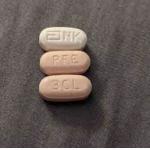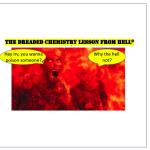If elements could be diagnosed using the DSM-V, zinc would be a textbook case:Code F31.9 — Bipolar I Disorder, current or recent episode unspecified.
The Dreaded Chemistry Lesson From Hell
I recently wrote about hexanitrogen, perhaps the world's most perfect rocket fuel, and a seriously bizarre molecule that decomposes like
Have you ever had a kidney stone? Your answer will almost certainly be "yes" or "no," not "I'm not sure." It’s a binary event, like asking, “Has your poodle ever piloted an Airbus A380?” No gray area here.
(This companion piece discusses the chemistry of erythritol and other sugar articles.
Disclaimer: For those of you who read this article for purely prurient reasons I must regretfully inform you that there is a real chance you may actually learn something.
We are approaching the two-year anniversary of the Emergency Use Authorization (EUA) of Paxlovid, the most effective COVID-19 antiviral drug.
Nowhere is the silliness of our drug laws more evident than in the case of tetrahydrocannabinolic acid (THCA).
I recently wrote that PROP President Andrew Kolodny's off-the-cuff remark about controlling the latest and arguably worst&
If you're sick of (or with) COVID, join the club. It's endless. SARS-CoV-2, the virus that causes the disease, keeps throwing one surprise after another at us in ways that could have never been predicted early in the pandemic.
It's always sort of fun to catch The New York Times when it makes a chemistry error. It happens from time to time, especially when they are writing about chemistry. I just caught one, but this time it's not their fault.












